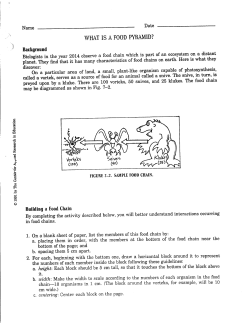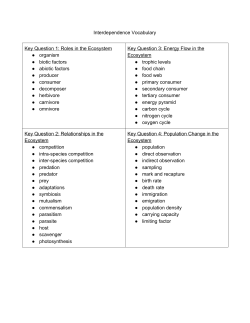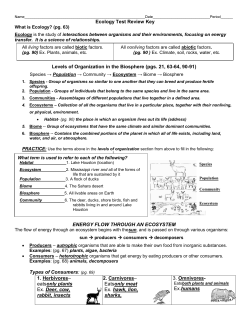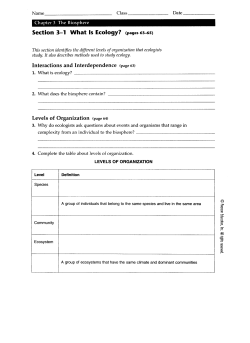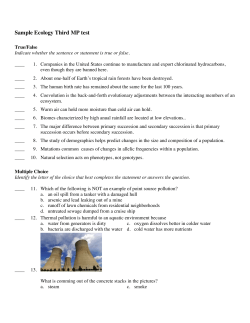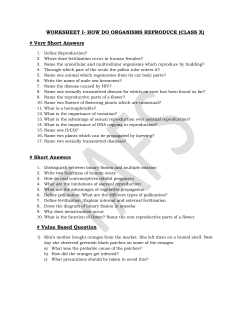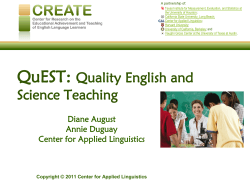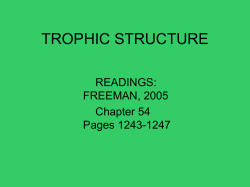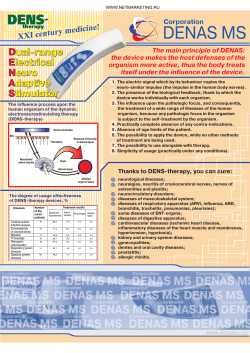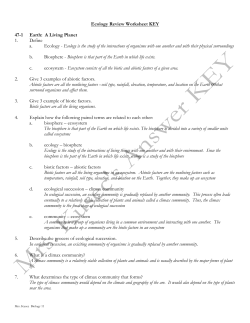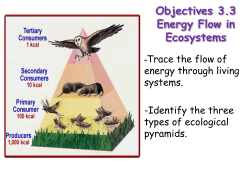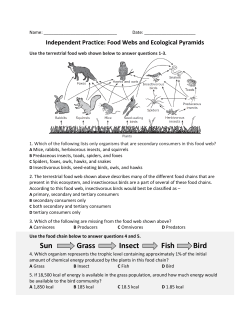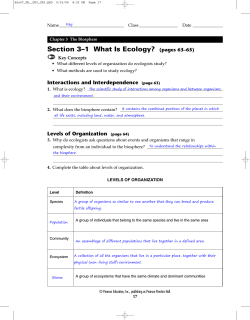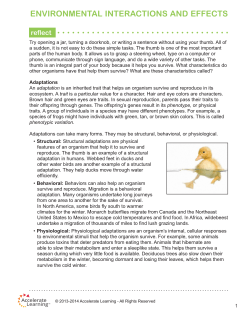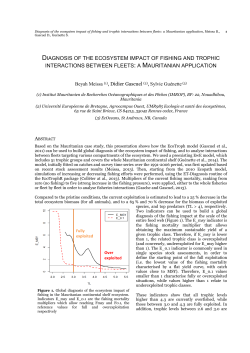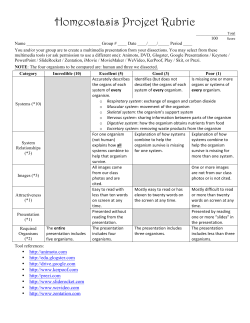
Food Chains Food Webs Energy Pyramids
Food Chains Food Webs Energy Pyramids The movement of energy through an ecosystem can be shown in diagrams called food chains. The sun begins the food chain because in most ecosystems, the sun is the original source of energy. Notice that the arrows point in the direction that the energy (the food) is moving. Food Chain A food chain is a simple model of the feeding relationships and energy transfer in an ecosystem. Trophic Levels Trophic levels are the “steps” in a food chain, moving from producers to the different levels of consumers. Food Chain The first organism in a food chain is always a producer. They make their own food. The primary consumer is the 1st level of consumers. They are usually herbivores. The secondary consumer is the 2nd level of consumers. They are usually carnivores or omnivores. The tertiary consumer is the 3rd level of consumers. Usually carnivores. The quaternary consumer is the 4th level of consumers. Usually carnivores. Pond Food Chain Terrestrial and Land Food Chains Terrestrial (Land) Food Chain In which direction is the energy moving (up or down)? Marine (Ocean) Food Chain Mountain Food Chain For example, shrubs are foodThe formountain deer,lion is the second consumer and deer are food for mountain lions. of the food chain. It eats the deer. It is the secondary consumer. Shrubs are the beginning of the food chain. They use sunlight to perform photosynthesis, making them producers. The deer is the first consumer of the food chain; it eats the shrub. It is the primary consumer. Ocean Food Chain large fish Human Pike Algae Perch Mosquito larvae Dragonfly larvae Food Chain with 6 levels Creating a Food Chain • A food chain is a series of events in which one organism eats another and obtains energy. • To create a food chain, start with the energy source (in most cases, the sun). Next • Put in the producer- the first organism (living thing) in the food chain • Arrows are used to show the flow of energy from one organism to another. The arrow always goes from left to right. • Then add the other organisms that feed off each other. Create a food chain from this ecosystem. Phytoplankton (algae) bass snapping turtle Can you create a food chain from this ecosystem? What’s missing? A Food Web is a network of many food chains that shows how energy is transferred within an entire ecosystem The arrows point in the direction in which the energy (the food) is moving. Lake Ecosystem We can show the relationships between populations in an ecosystem with the help of a Food Web What would happen in this ecosystem if chemicals poisoned many of the hawks? There will be nothing to eat the snakes, so their numbers will increase. All the frogs get eaten No frogs. More crickets Most of the cattail gets eaten by the crickets The number of crickets increases, so the number of shrews goes up as well. Now the crickets don’t have enough food so their numbers go down. Plus, the shrews are eating up the crickets. ..and so on. The numbers of each species have an effect on the numbers of the other species in the web. Predict What Will Happen Use the food web worksheet to predict what might happen in the following situations: A) There is very little rain and much of the Marsh Grass and Cattail die off. B) Humans nearby bring cats into the area. C) The frogs eat some poisoned slugs from a garden. D) Coyotes move into the area. Coyotes eat snakes, shrews, frogs and grasshoppers. Diagram that shows the amount of energy available at each trophic level of an ecosystem Trophic Levels Trophic Levels The Trophic level is the position the organism holds in a food chain. Examples: Producer, Primary Consumer, Secondary Consumer, Tertiary Consumer, Quaternary Consumer Energy Pyramid diagram that shows the amount of energy available at each trophic level What do you notice happening as you go from the bottom to the top of the energy pyramid? Energy Pyramid Only About 10% of the Energy in Organisms of One Trophic Level Is Captured by Organisms of the Next Level What do you think happened to the rest of the energy? It got used while the organism was alive. It takes energy to live! An organism uses energy to: • • • • Move around and get food Reproduce Keep its heart beating & lungs breathing Keep itself warm (keep its body temperature up) • Escape predators Some was lost as waste (pee, poop, sweat)
© Copyright 2025
